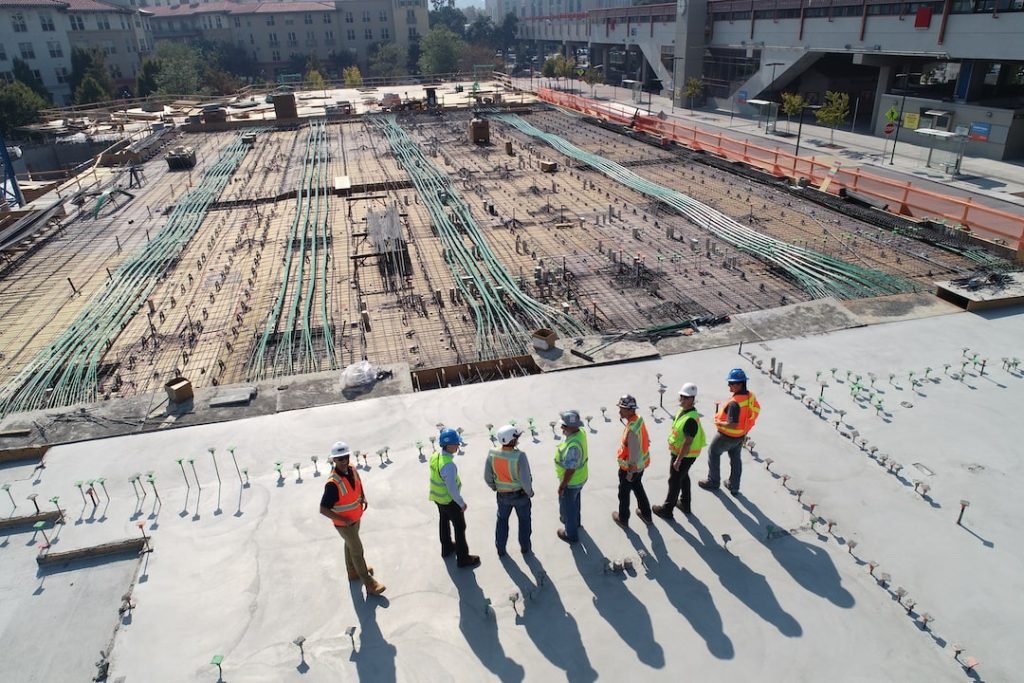

Construction and Trades: Understanding Spanish Vocabulary on the Job Site
In today’s globalized world, being bilingual is becoming increasingly important, especially in industries such as construction and trades. Spanish is one of the most widely spoken languages in the world, and learning Spanish vocabulary can greatly benefit professionals in these fields. Whether you are a construction worker, contractor, or tradesperson, having a strong command of Spanish can open up new opportunities and enhance your communication skills.
Being bilingual in the workplace has numerous benefits. It allows you to communicate effectively with Spanish-speaking coworkers, clients, and suppliers. This can lead to improved teamwork, increased productivity, and better customer service. Additionally, being able to speak Spanish can give you a competitive edge in the job market. Employers value employees who can communicate with diverse populations and navigate multicultural environments.
Table of Contents
ToggleEssential Spanish Vocabulary for Construction and Trades Professionals
To effectively communicate in the construction and trades industry, it is important to have a solid foundation of basic vocabulary. This includes terms related to construction materials, tools and equipment, and common tasks performed on job sites.
Some basic construction and trades vocabulary includes words such as “construcción” (construction), “obras” (works), “edificio” (building), “cimientos” (foundations), and “andamio” (scaffold). These terms are essential for understanding and discussing various aspects of construction projects.
In addition to basic vocabulary, it is important to learn the names of tools and equipment commonly used in construction and trades. Some examples include “martillo” (hammer), “destornillador” (screwdriver), “sierra” (saw), “taladro” (drill), and “escalera” (ladder). Knowing these terms will enable you to effectively communicate with coworkers and understand instructions.
Furthermore, learning vocabulary related to materials and supplies is crucial for professionals in the construction and trades industry. This includes words such as “ladrillo” (brick), “cemento” (cement), “madera” (wood), “hierro” (iron), and “pintura” (paint). Understanding these terms will allow you to accurately identify and discuss different materials and supplies used in construction projects.
Common Spanish Phrases Used on Job Sites
In addition to vocabulary, it is important to learn common phrases used on job sites. This will enable you to effectively communicate with Spanish-speaking coworkers and supervisors.
Greetings and introductions are an important part of building rapport and establishing relationships on the job site. Some common phrases include “¡Hola! ¿Cómo estás?” (Hello! How are you?), “Mucho gusto” (Nice to meet you), and “Buenos días/tardes” (Good morning/afternoon). Using these phrases will help create a positive and friendly atmosphere on the job site.
Giving and receiving instructions is another crucial aspect of communication in the construction and trades industry. Some useful phrases include “Por favor, pasa el martillo” (Please pass the hammer), “Necesito que cortes esta madera” (I need you to cut this wood), and “Puedes ayudarme a levantar esto?” (Can you help me lift this?). Using clear and concise language when giving instructions will ensure that tasks are carried out correctly.
Asking for clarification is important when there is a language barrier or when instructions are unclear. Some useful phrases include “No entiendo” (I don’t understand), “¿Puedes repetir eso, por favor?” (Can you repeat that, please?), and “¿Puedes mostrarme cómo se hace?” (Can you show me how it’s done?). Asking for clarification will help avoid misunderstandings and ensure that tasks are completed accurately.
Expressing gratitude and appreciation is essential for maintaining positive relationships with coworkers. Some common phrases include “Gracias” (Thank you), “¡Buen trabajo!” (Good job!), and “Aprecio tu ayuda” (I appreciate your help). Expressing gratitude and appreciation will foster a sense of teamwork and camaraderie on the job site.
Tips for Memorizing Spanish Vocabulary in Construction and Trades
Memorizing Spanish vocabulary can be challenging, but with the right techniques, it can become easier and more enjoyable. Here are some tips to help you effectively memorize Spanish vocabulary in the construction and trades industry.
Using flashcards and other memory aids can be a helpful way to memorize new words. Write the Spanish word on one side of the flashcard and the English translation on the other side. Review the flashcards regularly, testing yourself on both sides. This will reinforce your memory and help you associate the Spanish word with its English equivalent.
Practicing with coworkers or language exchange partners is another effective way to memorize Spanish vocabulary. Find a coworker who is fluent in Spanish and ask them to help you practice. Alternatively, you can join a language exchange program where you can practice speaking Spanish with native speakers in exchange for helping them learn your language. Practicing with others will not only improve your vocabulary but also enhance your speaking and listening skills.
Incorporating Spanish into your daily routines can also aid in memorization. Label objects in your workspace with their Spanish names, listen to Spanish podcasts or music while commuting, or watch Spanish-language TV shows or movies during your free time. By immersing yourself in the language, you will naturally absorb new vocabulary and reinforce what you have already learned.
Communicating Effectively with Spanish-Speaking Coworkers
Effective communication is crucial for a successful work environment, especially when working with Spanish-speaking coworkers. Here are some tips for communicating effectively with Spanish-speaking coworkers.
Active listening skills are essential for effective communication. When a Spanish-speaking coworker is speaking, make sure to give them your full attention and avoid interrupting. Focus on understanding their message rather than formulating your response. Use nonverbal cues such as nodding and maintaining eye contact to show that you are actively listening.
Using nonverbal communication can also enhance understanding. Nonverbal cues such as facial expressions, gestures, and body language can convey meaning and help bridge the language barrier. For example, if you are unsure of a word or phrase, you can use hand gestures or draw diagrams to clarify your message.
Avoiding cultural misunderstandings is important when working with Spanish-speaking coworkers. Different cultures have different communication styles and norms. Be aware of cultural differences and adapt your communication style accordingly. For example, in some cultures, it is common to speak more softly or avoid direct eye contact as a sign of respect. Being sensitive to these cultural nuances will help foster positive relationships and effective communication.
Understanding Spanish Technical Terms in Construction and Trades

In addition to basic vocabulary, it is important to learn technical terms specific to your trade in the construction industry. Each trade has its own set of specialized vocabulary that professionals need to understand in order to effectively communicate with coworkers and clients.
For example, if you are a plumber, you will need to learn terms such as “tubería” (pipe), “grifo” (faucet), “desagüe” (drain), and “cisterna” (toilet tank). If you are an electrician, you will need to learn terms such as “cableado” (wiring), “interruptor” (switch), “enchufe” (plug), and “circuito” (circuit). Understanding these technical terms will enable you to accurately discuss and troubleshoot issues related to your specific trade.
Furthermore, it is important to familiarize yourself with industry-specific jargon. Each industry has its own set of terms and acronyms that are commonly used. For example, in the construction industry, terms such as “HVAC” (heating, ventilation, and air conditioning), “OSHA” (Occupational Safety and Health Administration), and “LEED” (Leadership in Energy and Environmental Design) are frequently used. Understanding these terms will allow you to participate in industry discussions and stay up to date with the latest trends and regulations.
Safety Terminology in Spanish for Construction and Trades
Safety is a top priority in the construction and trades industry, and being able to communicate safety instructions and procedures in Spanish is crucial for maintaining a safe work environment. Here are some common safety phrases and vocabulary in Spanish.
Some common safety phrases include “¡Cuidado!” (Be careful!), “¡Deténgase!” (Stop!), and “¡Peligro!” (Danger!). These phrases can be used to alert coworkers of potential hazards or unsafe conditions.
Emergency response vocabulary is also important for ensuring the safety of everyone on the job site. Some useful phrases include “Llame a una ambulancia” (Call an ambulance), “Necesitamos ayuda” (We need help), and “Evacúen el área” (Evacuate the area). Knowing these phrases will enable you to effectively communicate during emergency situations.
Additionally, it is important to learn safety-related vocabulary such as “casco” (hard hat), “gafas de seguridad” (safety glasses), “guantes” (gloves), and “extintor de incendios” (fire extinguisher). Understanding these terms will allow you to identify and use safety equipment correctly.
Spanish Vocabulary for Reading Blueprints and Plans
Reading blueprints and plans is an essential skill for professionals in the construction and trades industry. Understanding architectural and engineering terms in Spanish is crucial for accurately interpreting and implementing these plans.
Some architectural terms include “plano” (plan), “fachada” (facade), “corte” (section), and “escala” (scale). These terms are used to describe different aspects of the building design and layout.
Engineering terms are also important for understanding blueprints and plans. Some examples include “estructura” (structure), “cimentación” (foundation), “vigas” (beams), and “columnas” (columns). These terms describe the structural elements of the building and their placement.
Identifying symbols and abbreviations is another important aspect of reading blueprints and plans. Symbols such as arrows, lines, and shapes are used to represent different elements of the building, while abbreviations are used to save space and simplify the drawings. Familiarizing yourself with these symbols and abbreviations will enable you to accurately interpret blueprints and plans.
Navigating Cultural Differences in the Workplace
In a multicultural work environment, it is important to understand and respect cultural differences. This will help create a harmonious and inclusive workplace where everyone feels valued and respected.
Understanding cultural norms and expectations is crucial for effective communication. Different cultures have different communication styles, levels of formality, and expectations regarding hierarchy and authority. For example, in some cultures, it is common to address coworkers by their first names, while in others, it is more appropriate to use formal titles. Being aware of these cultural nuances will help you adapt your communication style accordingly.
Respecting diversity and inclusivity is essential for creating a positive work environment. Embrace diversity by celebrating different cultures, traditions, and perspectives. Avoid making assumptions or stereotypes based on someone’s cultural background. Instead, foster an environment where everyone feels comfortable expressing their ideas and opinions.
Resources for Learning Spanish Vocabulary in Construction and Trades
There are numerous resources available for learning Spanish vocabulary in the construction and trades industry. Here are some options to consider:
Online courses and tutorials: Many websites offer online courses and tutorials specifically tailored to professionals in the construction and trades industry. These courses often include interactive exercises, quizzes, and audio recordings to help you practice and reinforce your vocabulary.
Language exchange programs: Joining a language exchange program can be a great way to practice speaking Spanish with native speakers. These programs typically involve pairing up with a language partner who is interested in learning your language. You can meet regularly to practice speaking Spanish and English, helping each other improve your language skills.
Industry-specific vocabulary lists and resources: There are numerous industry-specific vocabulary lists and resources available online. These resources often include specialized terms and phrases related to specific trades or areas of expertise. Use these lists as a reference when studying or preparing for specific projects or tasks.
In conclusion, learning Spanish vocabulary in the construction and trades industry is essential for effective communication and professional growth. By expanding your language skills, you can enhance your job prospects, improve teamwork, and provide better customer service. With the right resources and techniques, you can successfully navigate the language barrier and thrive in a multicultural work environment.
If you want to learn Spanish, you can register for classes here. We look forward to hearing from you and helping you become fluent in Spanish!
If you want to learn Norwegian, you can register for classes here. We look forward to hearing from you and helping you become fluent in Norwegian.





